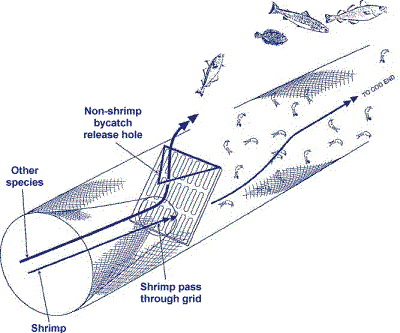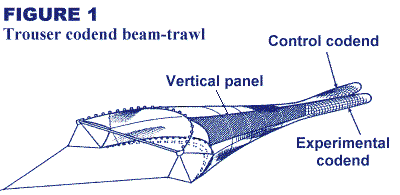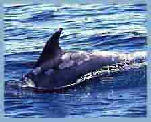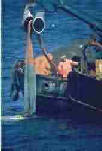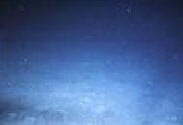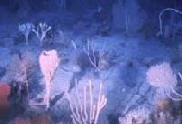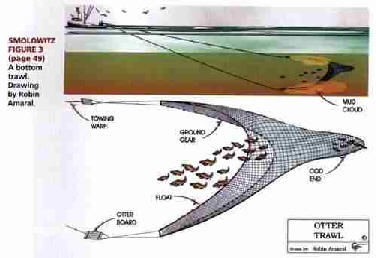|
These high levels of discards have a significant impact on cetacean populations.
Evidence suggests that an increasing number of cetaceans are malnourished due to depleted fish stocks.
April – June 2001: when 43 cetaceans were post-mortemed in the UK, 10% were found to have died of starvation.
There are measures, which can
be taken to reduce the levels of
fish discards.
Square mesh panels are used with
some success to reduce capture
of non-targets species in flatfish
fisheries.
Sieve netting and selection grids,
together with larger codend mesh
sizes, are used to mitigate this
problem, particularly in shrimp
trawl fisheries.
However, selection grids have
been shown to damage a
proportion of both the target
species and the non-target fish
species.
Evidence from New Zealand
suggests that these grids can, and
do harm marine mammals.
(Department of Conservation
CSL 2000/2001 Contract:
Autopsy of New Zealand
sea lions incidentally caught
in commercial fisheries:
preliminary results of cover-net
trials. Progress Report 16 July 2001)
Constant seabed disturbance results in changes in biodiversity, favouring fast breeding species such as certain small worms. Long living (sessile) species of animals like brittle stars, sand stars, reef building bristle worms and big bivalves are being replaced by short living pioneer species.
Sea floor before trawl~ ~ ~ ~ ~ ~ ~ ~ ~ ~ ~ ~ ~ ~ ~ ~ Sea floor after trawl
The disruption of the sediment causes pollutants to be re-introduced as an emulsion, resulting in further absorption into the food web. This causes a major problem in the North Sea, as the concentration of chemical pollutants in solution is significantly increased by this process.
http://www.europarl.eu.int/stoa/publi/default_en.htm
Scientific evidence indicates that significantly high levels of toxins
have been found in bodies of stranded cetaceans, and in cetacean
populations in the wild.
http://www.abdn.ac.uk/biocet/#A
http://www.abdn.ac.uk/~nhi519/lighthouse/dolphins/organ.shtml
Bottom Otter Trawls.
A bottom otter trawl is a cone-shaped net consisting of a body, normally made
from two, four or more panels, closed by one or two codends and with lateral
wings extending forward from the opening.
Two otter boards keep the trawl open, horizontally.
There are many models of otter
boards. They may be relatively
heavy, made of wood, aluminium or
steel or a combination of these. They
can be rectangular or oval, and are
equipped with a steel sole designed
for good contact with the ground. On
very rough “bottoms” special rock
hopper gears are used. A vessel can
be rigged to tow a single or two
parallel trawls. They can be used in
depths of a few metres, down to
depths of 1500-2000 metres.
Bottom otter trawling is a non-selective method of fishing. Many non-target species are taken, resulting in high levels of discards.
In 1990, an estimated total of 800,000 tonnes of fish, invertebrates and offal were discarded in the North Sea alone. More than 70% of discards consisted of demersal roundfish and flatfish.
http://www.europarl.eu.int/stoa/publi/98-17-01/default_en.htm
A 1994 FAO Fisheries Technical Paper suggested that total costs of bottom fish discarded in the North Sea could have approached the value of landed catch (approximately 470,000 tonnes with an estimated first sale value of 700 million euro in 1997).
An OECD study reported that the number of haddock individuals discarded in the North Sea exceeded the number landed (84,000 tonnes of haddock in 1997, with an approximate first sale value of over 100 million euro).
|
